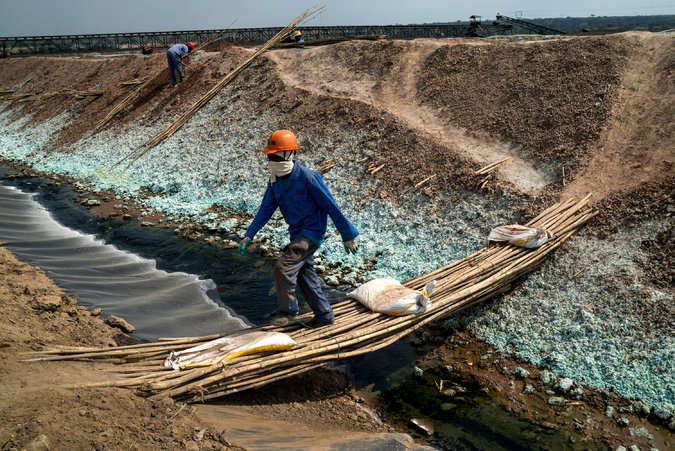EU African EPAs in limbo

Bordelex | 19 April 2016
EU African EPAs in limbo
By Iana Dreyer
The EU’s Economic Partnership Agreements – or EPAs - with sub-Saharan countries inked a few years ago are not getting off the ground as African governments don’t like their EU-inspired rules on raw materials policies. African countries are also currently prioritising continent-wide regional integration.
EPAs, the trade agreements between the EU and various sub-Saharan African country blocs inked in 2014 and 2015, or in some cases formally still under negotiation, are not getting off the ground. The ratification process of the reciprocal trade agreements is stuck.
Raw materials
One reason for the blockage is EPAs’ raw materials provisions. The trade relationship between Europe and Africa, expressed through the Economic Partnership Agreements, and how Europe relates to Africa on the issue of raw materials, has to change”, African Union Chairperson Dlamini Zuma told Europeans at the EU-AU Commissioners’ College-to-College meeting in Addis Abeba early April.
The key argument in a continent whose economies tend to be commodity-dependent is that to reduce this dependence it is necessary to develop industries. Trade protection remains a key plank of that process in the eyes of many African decision-makers. The EU in particular has gripes with measures that restrict exports of raw materials with the aim of keeping prices low for domestic producers in upstream industries or even more bluntly with the aim of discouraging such efforts and hope more elaborate processing of raw materials into industrial exports will come out of this.
“In order to diversify our economies, we need to add value and beneficiate our raw materials. We cannot, and will not therefore, continue to have binding agreements that are in contradiction to the way we think we should work to diversify our economies, to improve job creation, and to develop Africa”, Ms Zuma said.
The EU seeks to have its trading partners sign up to rules that ban practices like export taxes on raw materials. The Western African ECOWAS EPA does not have such rules, but the South African Development Community – SADC – EPA caps export taxes to a maximum of ten percent. The EAC EPA allows countries to introduce export taxes for purposes such as infant industry development. But it restricts these measures in time.
Regional disintegration
Uzo Madu from the blog What’s In it for Africa explains that the ECOWAS EPA is also stuck but for other reasons: “The EPA is currently at a firm standstill with ECOWAS. “The Gambia, Mauritania and Nigeria refusing to sign the agreement”, she writes. ”Arguments against signing the agreement are largely entrenched in the threat posed by increased EU competition, the loss of tariff revenues, and most notably … regional disintegration”, Mazu explains.
The EU’s main arguments for EPAs are that they support regional integration in Africa. In fact they don’t, rather “the EPA negotiating process has disrupted existing regional economic blocs”, Uzo Madu writes. For example, Mauritania is no longer an ECOWAS member but is in the ECOWAS negotiating bloc. The 13-Member Southern African Development Community (SADC) is split between three different EPA negotiating blocs. “The EPA negotiating blocs on the African side can be said to go against regional integration on the continent as a whole,” Mazu writes.
“Because regional blocs are engaging into EPA’s, rather than the continent as a whole it means that each region will have significantly different texts and different liberalisation commitments, resulting in trade between regional blocs remaining fragmented and potentially frustrating plans for a continental trading bloc in the coming years”, Madu adds. “This comes at a time when Africa is implementing intra-regional trade policies which cross the continent and extend beyond even the regional blocs it has made for itself”.
The Southern African Development Community (SADC), the East African Community (EAC), and the Common Market for Eastern and Southern Africa (COMESA). launched the The Tri-Partite Free Trade Area in June 2015. They want to move towards a Continental Free Trade Area bringing together fifty-four African countries by 2017.





